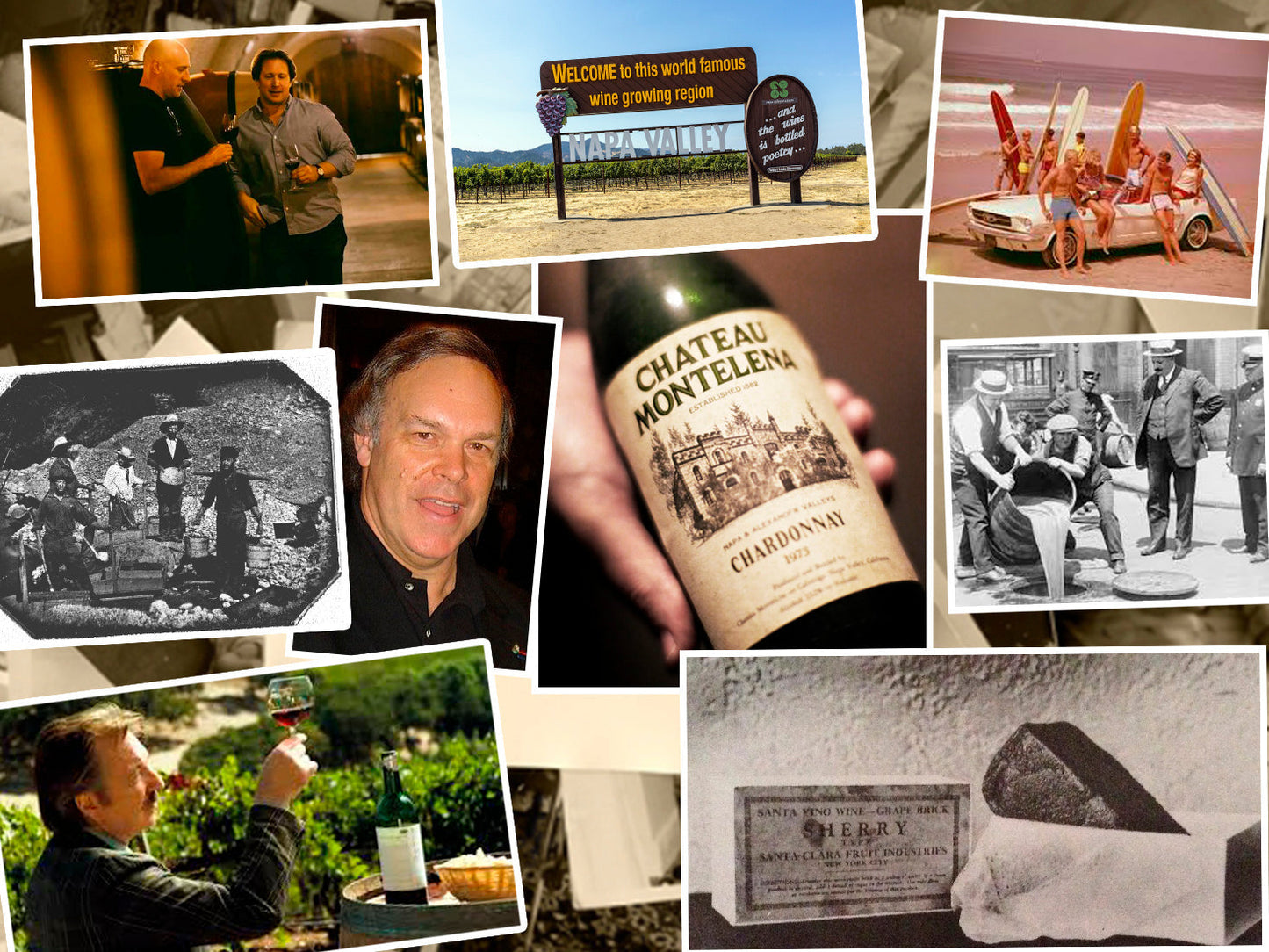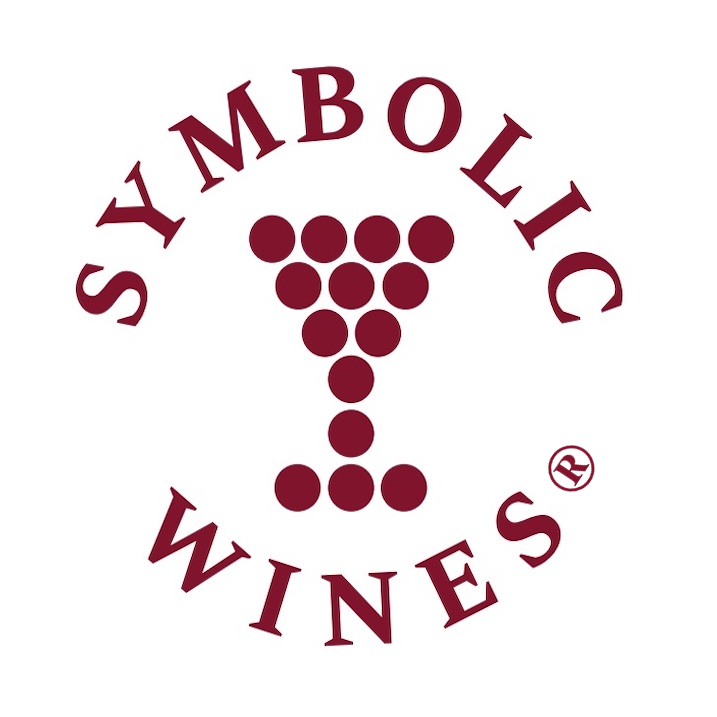
Text by: SW Team
This history of winemaking is probably one of the youngest but also it’s the most exciting one. From the first missionaries and gold miners to Robert Parker and TikTok bloggers – this article features all the key moments of California wine history.
California's wine regions are a testament to the state's diverse climates and terrains, producing a wide array of exceptional wines. Spanning over 700 miles from Mendocino County in the north to Riverside County in the south, California boasts more than 147 American Viticultural Areas (AVAs), each offering unique characteristics and varietals. California is responsible for producing 90% of all wine made in the United States, whether through large-scale operations or small-batch, single-vineyard craftsmanship. In 2022 alone, the state generated nearly 600 million gallons of wine, accounting for over 60% of the nation's total wine consumption.
California might be prominent on the global wine scene now, but it wasn’t always swirling in the spotlight. The big break came in 1976 at the legendary “Judgement of Paris,” when some rural California bottles went head-to-head in a blind tasting with French heavyweights – and suddenly won. That moment popped the cork on California’s global reputation, but the roots go way deeper. By the way, the “Judgement of Paris” is well depicted in a movie called Bottle Shock featuring Chris Pine and Alan Rickman. Well be back on this moment, but now – from the start.
18th-19th century: the deep roots
California’s winemaking roots go all the way back to 1769, when Spanish Franciscan missionaries rolled up with more than just Bibles – they brought vines. At Mission San Diego de Alcalá, Father Junípero Serra planted the first grapes in what would become a long, juicy legacy. The grape they used became so widespread it earned the name “Mission” and totally dominated California vineyards until around 1880. You could say it was the state’s original vine influencer.

The goldminers. Photo courtesy – Bancroft Library, University of California, Berkeley and library.ucdavis.edu
Back in the day, Southern California was where most of the wine action happened – until the Gold Rush crashed the party. Between 1848 and 1855, thousands flocked north in search of fortune, and by “thousands,” we mean a lot. San Francisco’s population exploded from a sleepy 1,000 to a booming 25,000 in just one year. And guess what? Gold miners weren’t just digging – they were drinking too. Demand for wine skyrocketed. So, naturally, vines followed the pickaxes. Some of today’s most iconic wine regions – Napa, Sonoma, El Dorado, Sutter County – got their start during this chaotic, thirsty gold-fueled frenzy. By the time the 1900s rolled around, California wasn’t just making wine for locals; it was shipping bottles across the globe, from Australia to Asia and everywhere in between.
Beginning of 20th century: the wine-dark days
The early 20th century became the wine-dark days for the whole world and for California in particular. America’s wine industry was left gasping for air. The first big blow came with Prohibition (1920-1933), when making, selling, and transporting alcohol was outlawed across the U.S. Almost overnight, thousands of wineries shut down or were reduced to ghost operations. Only a few managed to limp through by producing sacramental wine for churches (a surprisingly popular loophole) or selling grape juice “bricks” with a helpful warning: “Do not add yeast or let ferment in a warm cupboard, or it will turn into wine.” (Wink-wink.)

Grape juice “bricks”
By the time the cork popped on the end of Prohibition, the California wine industry was in tatters – many vineyards had been ripped out or replanted with table grapes, and winemaking skills had faded. Just as the industry started to find its footing again, the Great Depression hit in the 1930s, tightening wallets and killing off the luxury market for wine. Then came World War II, which brought another wave of disruption – labor shortages, rationed materials, and a distracted, war-focused economy. But it wasn’t all doom and gloom. Wartime innovations in agriculture and technology eventually trickled into viticulture, and after the war, returning soldiers and a booming economy laid the groundwork for a renaissance. In short, California’s wine industry took a century’s worth of punches – but kept bouncing back, glass in hand!
Late 20th century: the resurrectuion
Things really started to ferment again only after WWII. One of the brightest persons in reviving Californian winemaking in those times was André Tchelistcheff. Arriving in Napa Valley in 1938 from Russia, he joined Beaulieu Vineyard as vice president and chief winemaker. Tchelistcheff introduced game-changing techniques like aging wines in small French oak barrels, cold fermentation, and malolactic transition. His meticulous approach elevated California's Cabernet Sauvignon to world-class status, with the "Georges de Latour Private Reserve" becoming a benchmark for excellence. Beyond crafting iconic wines, Tchelistcheff mentored a generation of winemakers, including legends like Robert Mondavi and Mike Grgich, cementing his legacy as the "dean of American winemakers." His influence took root immediately and continued for decades – particularly through the 1940s to 1970s – as he modernized winemaking practices and mentored many of the figures who would later shape the California wine boom.

André Tchelistcheff
The 1970s were California wine’s coming-of-age decade. The state was finally ready to show the world what it could do. The most iconic moment was the Judgement of Paris in 1976, where California wines – Stag’s Leap Wine Cellars’ Cabernet Sauvignon and Chateau Montelena’s Chardonnay – famously beat top French bottles in a blind tasting. It shocked the wine world and put Napa on the map overnight. Trailblazers like Robert Mondavi were already making waves, having launched his eponymous winery in 1966 with a mission to produce premium wines that could stand toe-to-toe with Europe’s best. The decade also saw a surge in boutique wineries – places like Heitz Cellar, Ridge Vineyards, and Joseph Phelps – experimenting with style and showcasing the potential of single-varietal wines.

Screenshot from Bottle Shock movie
By the 1980s, California was no longer the underdog – it was a serious player. The wine industry matured rapidly, with production ramping up and quality soaring. This era brought technical precision, new viticultural techniques, and the steady rise of Cabernet Sauvignon as California’s crown jewel. André Tchelistcheff’s influence was still strong, especially through the winemakers he mentored, and global consultants like Michel Rolland began shaping bold, fruit-forward styles that would soon dominate. The 1990s were all about scale, scores, and status. Robert Parker’s wine ratings carried enormous weight, and his preference for rich, powerful reds helped shape a generation of winemaking. Wineries chased 90+ scores like Olympic gold, which led to a boom in oak-heavy, high-alcohol Cabs and Chardonnays – sometimes polarizing, but undeniably influential. Iconic producers like Opus One, Silver Oak, and Duckhorn became household names, while cult wines like Screaming Eagle and Harlan Estate emerged, fetching astronomical prices and long waitlists. California had officially gone from upstart to wine royalty.
2020s: the current page
Fast-forward to 2025, and California’s wine game is stronger and more creative than ever. Sustainability isn’t just a buzzword, it’s the new standard, with winemakers embracing organic, biodynamic, and low-intervention techniques like pros on a mission. Natural wines are having a serious moment – cloudy pours, funky flavors, and minimal intervention are all the rage, especially with the hipster sommelier crowd and adventurous drinkers who prefer their wine a little wild.

Photo: KK Stock / Shutterstock.com
Of course, California’s not all sunshine and stainless steel. Wildfires remain a serious threat, with smoke taint and climate unpredictability keeping winemakers on their toes (and sometimes on edge). But resilience runs deep here. Winemakers are adapting, experimenting with hardier grapes, and investing in smarter, fire-conscious vineyard practices. Wine critics and writers stick to a new style of Californian wine – not the heavy fruit bombs of Parker era, but more elegant and refined old-world-styled ones. Not just the old guard calling the shots anymore. Wine bloggers, Instagram sommeliers, and TikTok taste-testers are reshaping the way people discover and talk about wine. In today’s California, the conversation around wine is as lively and varied as the bottles themselves – snobbery out, storytelling in. California’s still riding high – proving that a little sun, soil, and stubbornness can go a long way in the wine world.
